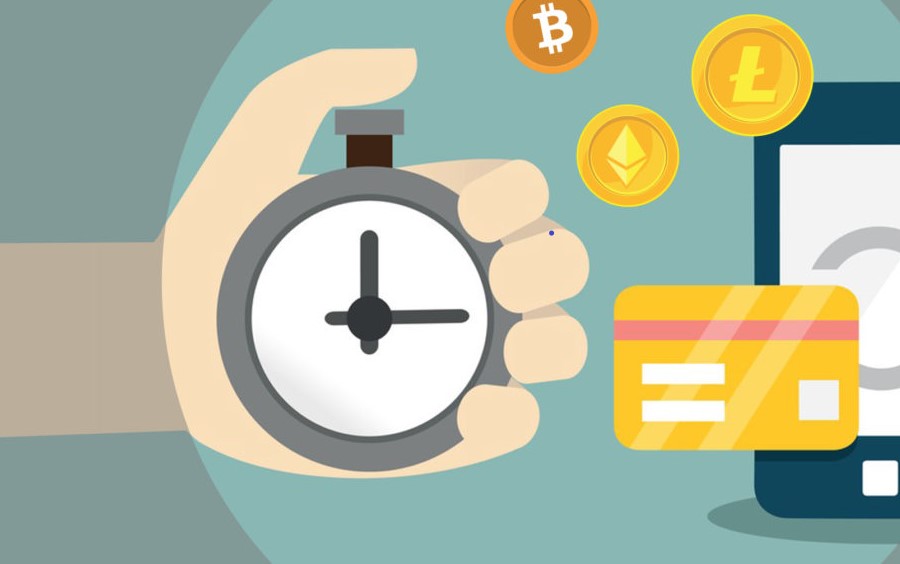The World Economic Forum (WEF) published the June 2021 edition of its community paper titled “Cryptocurrencies: A Guide to Getting Started.” As the title stated, the paper is a beginner’s guide into the world of cryptocurrencies and it educates potential investors on the basics of cryptocurrencies. It covers how to buy and sell cryptocurrencies, transferring from one person to another, introduction to blockchain technology, the programmability of cryptocurrency by doing a deep dive into the Ethereum network, and notably, throughput and scalability.
In this article, we will be looking at the throughput and scalability aspect of the community paper. Six cryptocurrencies were highlighted that are believed to offer the most throughput and scalability.
Scalability is one of the most important problems in blockchain and has been the focus of both industry practitioners and academic researchers since Bitcoin was created. Scalability is a comparative term within blockchain technology, most notable for assessing throughput. Throughput approximates the number of transactions that can be processed per second on the blockchain network of a cryptocurrency.
Scalability is an important aspect of cryptocurrencies an investor must look at before investing in the asset class. It determines how valuable a blockchain network is by gauging the level of transactions and smart contracts that the network can launch. Today, Bitcoin network can process up to 7 transactions per second (TPS) if the block time is ten minutes. Ethereum processes about 15 TPS.
Compared to traditional payment vendors, such as VISA or PayPal, the transaction capacities of cryptocurrencies such as Bitcoin and Ethereum are very low. The world’s leader in digital payments, VISA, claims that it can handle more than 65,000 transaction messages a second and handles an average of 150 million transactions every day. In contrast, the payment network PayPal “only” handles 193 transactions per second, or about 5 million transactions a day. The only thing that makes Bitcoin and Ethereum seemingly more valuable is the use case of instant cross-border facilitation without the need for middlemen and the ability to launch smart contracts through codes on the blockchain network. Having mentioned this, there are 2 types of scaling:
Horizontal and vertical scaling
Vertical scaling involves adding processing power and memory to each node, thus creating more powerful nodes. Consequently, the efficiency of individual transactions is improved while Horizontal scaling, on the other hand, entails adding more machines to a system and improving overall throughput capacity. In summary, fewer nodes and thus higher centralisation of a network (such as EOS) generally increase network speed, while transparency and overall immutability are lower than in a highly decentralised network such as Bitcoin.
It is currently unlikely that, in terms of technology, one single scaling solution will manage to take into consideration all factors to provide the optimal solution for the Bitcoin network. However, many other coins have proposals they are working on to provide different solutions to this predicament as technology is making headway.
Let’s take a look at the scalability of the 6 coins listed by looking specifically at the throughput of the underlining blockchain technology of the cryptocurrencies.
Algorand
Algorand (ALGO) is a self-sustaining, decentralized, blockchain-based network that supports a wide range of applications. The system is said to be secure, scalable and efficient. Algorand will support computations that require reliable performance with guarantees to create new forms of trust. The Algorand mainnet was launched in June 2019 and was able to handle almost 1 million transactions per day as of December 2020. Algorand currently allows for 1,000 transactions per second with a ledger close time of approximately five seconds.
Cardano
Cardano (ADA) open-source project also aims to “redistribute power from unaccountable structures from the margins to individuals,” helping to create a society that is more secure, transparent, and fair. The Cardano blockchain network allows for 257 transactions per second and it just recently launched its smart contract platform testnet called Alonzo.
Celo
Celo (CELO) is a blockchain ecosystem focused on increasing cryptocurrency adoption among smartphone users by using phone numbers as public keys. Celo hopes to introduce the world’s billions of smartphone owners, including those without banking access, to transacting in cryptocurrency. Celo has a ledger close time of approximately five seconds, with 1000 transactions per second.
Ripple
Ripple (XRP) was created to be a speedy, less costly, and more scalable alternative to other digital assets and existing monetary payment platforms like SWIFT. It is a global open-source public blockchain that focuses on payments as its core use case. XRP boasts 1,500 transactions per second, costs $0.0003 per transaction, and settles in 3 seconds.
Solana
Solana (SOL) is designed to facilitate decentralized app (DApp) creation. It aims to improve scalability by introducing a proof-of-history (PoH) consensus combined with the underlying proof-of-stake (PoS) consensus of the blockchain. Solana is known in the cryptocurrency space because of the incredibly short processing times the blockchain offers. Solana’s hybrid protocol allows for significantly decreased validation times for both transaction and smart contract execution. With lightning-fast processing times, Solana has attracted a lot of institutional interest as well. The system currently supports 50,000 TPS (Transactions per second).
Stellar Lumens
Stellar Lumens (XLM) is an open network that allows money to be moved and stored. Initially, its goal was to boost financial inclusion by reaching the world’s unbanked but soon afterwards, its priorities shifted to helping financial firms connect through blockchain technology. Stellar’s ledger limit is currently set at 1,000 operations per ledger. With ledgers closing approximately every 5 seconds, that’s a limit of 250 transactions per second.
Why does this Matter?
As an investor, the scalability, and throughput of a cryptocurrency that has its own blockchain network can be technical to understand but it is necessary to seek knowledge before deciding to invest. It points to how valuable the network is and if there is room to table a large volume of transactions in case there is increased demand.
Today, the Ethereum network suffers the plague of high gas fees (transaction fees) because of network congestion. For example, during the market crash we experienced a month ago, the network saw its gas fees as high as $2,000 because investors were panic selling. This is an inherent issue and an example of a network that has scalability problems. The Ethereum network has, however, mentioned that they will be doing a London hard fork upgrade to their network sometime in the summer which is expected to help improve scalability and throughput.
























If you are talking about cryptocurrencies that offer the fastest transaction time than you missed
MetaHash. You can check here: https://mhc.zone/
I used and tested it serveral times. Transaction time is between 1s and 4s normally.
Best regards
Yes, Metahash is revolutionary
Hi Please consider #MHC @themetahash for your update or next release.
In terms of fast; the network sees a peak of 160,000+ tps on a daily basis, Even if we assume a lower rate of 100k tps thats 360,000,000 transactions an hour. The system consumes about 100 kWh. So each transaction costsin the region of 0.00000027kWh.
Metahash was designed with proof of stake to be Fast, efficient and secure. With zero fees at under 20% utilisation, instant (sub 3 second) finality on a truly decentralised platform, Metahash is the future…
Check metahash.org and MHC.zone or /r/metahash for more info.
I agree Metahash kicks butt when it comes to speed and transactions. A real gem at the moment to acquire. Wish I had more to invest.
You forgot hedera hashgraph
kadena 500k per sec